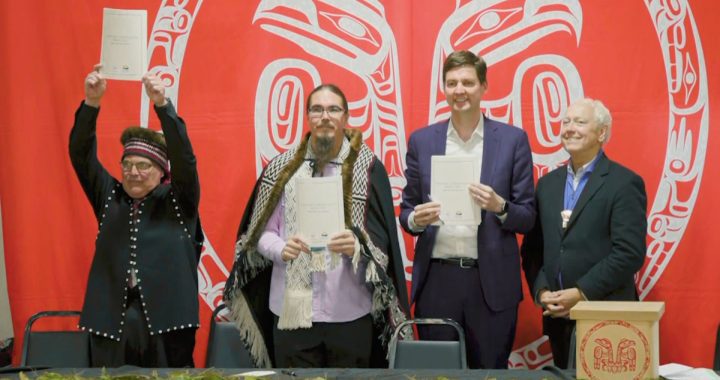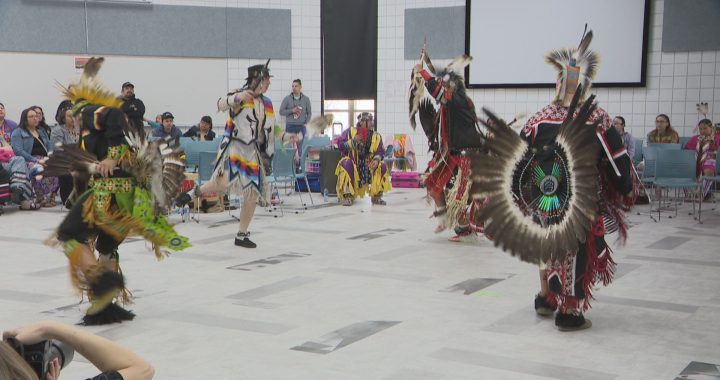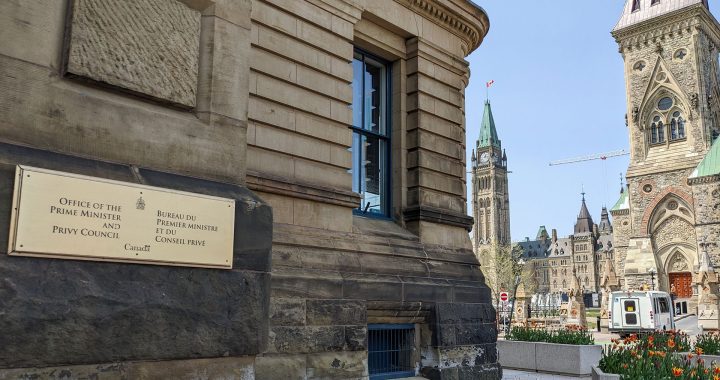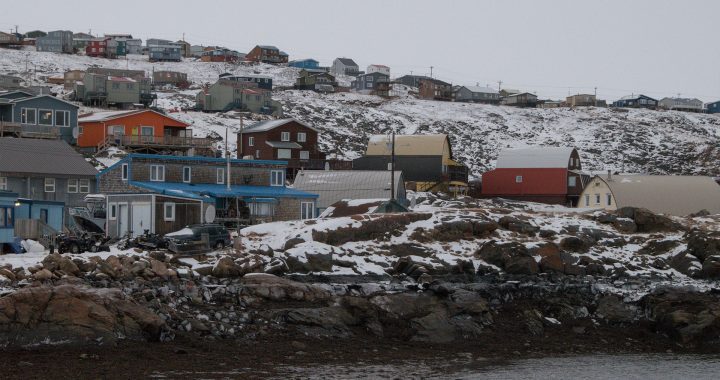The Innu community of Matimekush-Lac John in Quebec’s Cote-Nord region recently concluded their annual caribou hunt, except this year the traditional Innu practice is prompting disagreement among other First Nations who share the territory.
In late January, a team of 16 hunters set out on a 12-hour Ski-Doo trip to the Réservoir de Caniapiscau, east of Schefferville near the Labrador border, hoping to cull a total of 300 caribou from the Riviere aux Feuilles herd over a two-week period.
The annual hunt is considered a rite of passage for those embarking on it, braving frigid temperatures and undertaking the physically demanding task of butchering large game.
But this time other nations are raising concerns.
“[Our] population is asking, in certain moments, ‘When are we going to eat caribou? When are we going to eat some?’” Noah Swappie, chief of the Naskapi Nation of Kawawachikamach, told APTN Nouvelles Nationales.
“Just a little – not to fill up our freezers,” he added. “But just to eat a little.”
According to Swappie, the overall herd number at Riviere des Feuilles has been declining for several years.
Except Steeve Cote, director of preservation organization Caribou Ungava, says the population is relatively stable compared to a 15-year period between 2001 and 2016, when a total of 400,000 caribou were killed.
“At 186,000 for the estimates done in 2019 – which were the most recent done – there’s a slight decrease,” Cote explained. “We’re talking about a herd that is relatively stable, or currently in slight decline.”
Real McKenzie, chief of Matimekush-Lac John, specified in a phone interview that other caribou herds in the area, like the Lac George herd, are off-limits to hunters – but the herd at Riviere des Feuilles is not.
“There are no government restrictions outlining that First Nations don’t have the right to hunt. At this time, there are no restrictions,” McKenzie stated.
“It could happen if the herd numbers plummet in a radical fashion – then there may have to be a ban for everyone, including First Nations.”
McKenzie says the Cree Nation also expressed some disapproval of the annual Innu hunt.
The Cree Nation government, however, declined Nouvelles Nationales’s interview request – but said in an email the caribou issue is “under study.”
There are currently no government agreements outlining how – or if – the Innu can cull caribou on territory shared by other First Nations.
The James Bay and Northern Quebec Agreement – a land claim agreement sometimes referred to as a “modern-day treaty” – was signed between the Cree and the Quebec government in 1975, and later amended to include both the Naskapi and Inuit.
Simply put, the amended 718-page document makes provisions for use of land in Quebec by establishing a three-tier priority system.
All lands designated Category I, for example, are defined as “lands in and around the communities” set aside for exclusive hunting and development use by First Nations and Inuit.
Lands considered Category III – comprising more than 60 per cent of the overall territory of Quebec – have some specific provisions for First Nations, but are open to hunting and development by the rest of the population.
The agreement also outlines some rules and regulations specifically for inter-territorial hunting.
For example, Section 24 of the Agreement stipulates the Naskapi have the right to hunt on Cree territory “without being subject to the control of the Cree Tallymen,” but only if the person is “within this area for the purpose of harvesting caribou and only for purposes of food in case of need.”
In another example, Inuit can only hunt in areas below the 55th parallel “when unable to attain the quota(s) of caribou allocated to them from among the species in the whole of the territory.”
McKenzie, for his part, says the James Bay Agreement doesn’t directly address or impact Innu hunting rights.
“We’re exercising our right even though we haven’t signed any agreements. In this case, we are not signatories on the [James Bay] agreement,” McKenzie said.
“It’s a file that never took into account the territorial overlaps between the Cree Nation, the Inuit and the Naskapi, who all signed the agreement.”









